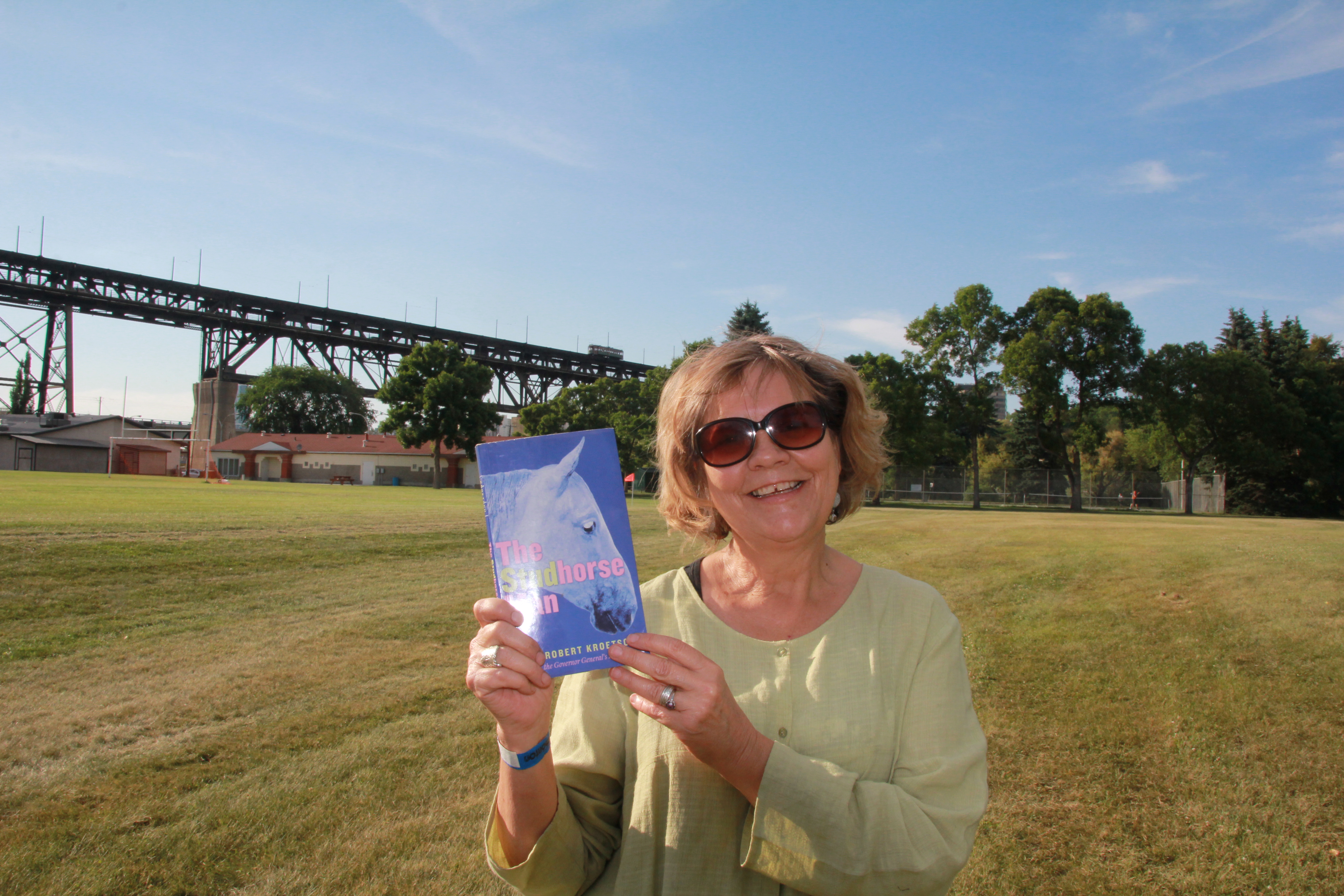In 1969, my first year of university, I was finally free of the social girdle of my small prairie town. I was sprung from home into an arts degree at the U of A, but sprung into one of the coldest winters on record. The Edmonton Journal even gave out certificates: I Survived the Winter of ‘69.
Someone gave me a copy of Robert Kroetsch’s wild and crazy novel, The Studhorse Man. I skipped a lot of classes. Curled up in my cramped Lister Hall women’s residence room, I marvelled that this was the first book I’d read set where I was living. And what a blue, bawdy, raunchy ride it was! Warmed me right up.
The Studhorse Man was like nothing I’d ever read. Its plot galloped through the actual places I was discovering as a young adult: Jasper Avenue, the Legislature, the Hudson’s Bay department store, Mike’s Newsstand and, especially, the High Level Bridge.
Every time I drive or walk the High Level, I think of The Studhorse Man, published in 1969 but set in the late 1940s at the liminal historic encounter between the horse as a primary means of prairie transportation and gush of the Leduc Number One oil well that helped secure the hegemony of the automobile. In the middle of an epic December blizzard, the eponymous Poseidon and four captive mares from a herd of wild horses loose in the city, and heads south over the High Level Bridge, a short ride ahead of the law. At the south end where the road curves sharply up the river bank (the exact place where I scraped my dad`s Oldsmobile), the horses are spooked by a CN train passing over the top of the bridge. The horses rear, jackknife the wagon and choke off traffic.
So many of the iconic buildings detailed in Kroetsch’s novel are gone: the Rialto Theatre, the Palace of Sweets, Mike’s Newsstand. We have become used to this kind of urban erasure and amnesia: like the prairie gopher, buildings emerge vertical, and … disappear. But the High Level Bridge, a proud centenarian, is still wonderfully, stubbornly here. Not the most beautiful, not the most elegant, not even the most practical bridge, but it’s still standing. And through Kroetsch`s Studhorse Man, the bridge is still inextricably connected for me to the thrill of reading, for the very first time, a story set in my city, a city that invites adventure, a city worthy of becoming literary.
Happily, we now have a growing number of novels set in Edmonton. Ian McGillis’s A Tourist’s Guild to Glengarry, Todd Babiak’s The Book of Stanley, Janice MacDonald’s Randy Craig mysteries, Jocelyn Brown’s young adult novel The Mitochondrial Curiosities of Marcels 1 – 19, Theresa Shea’s The Unfinished Child, to mention just a handful.

